Can art and science get along? Of course they can! With a Ph.D. in marine science, Sylvia Schaefer approaches quilting from a scientist’s point of view, always asking, “What if?” Her experiments in science-based design result in striking modern quilts with a creative use of bold space. Her latest book, Modern Scrap Quilts, provides ideas for using your scraps to make modern quilts..

How did you find yourself on an artist’s path? Always there? Lightbulb moment? Dragged kicking and screaming? Evolving?
I think I’ve always been there, but didn’t really realize it for a long time. I have always been what I would describe as “crafty,” and as a teenager and beyond my choice of craft was stamping and cardmaking. Probably in part because I was of that last group of kids that had pen pals who sent actual letters through the mail.
In high school, I always wanted to take art classes, but they never really fit into my schedule. And I definitely got the message that art was not a serious and worthwhile subject to pursue. So it’s taken me a long time to not minimize my desire to do art.
Why textiles? Why quilting? How did you get started with fabric and stitch?
As an Amazon Associate I earn from qualifying purchases. Read more about our affiliate linking policy.
I learned to sew clothes as a kid, but never got very far with it. I was never really exposed to quilting until graduate school. At that time, I joined a group of students that held regular craft nights to unwind from work. We all were interested in different things and would just bring whatever we were working on. I was very intrigued by the beautiful fabrics and creative patterns that the quilters were bringing.
At the time, I was still very much into rubber stamping, and when I finally decided to give this quilting thing a try. I all but dropped stamping like a hot potato. In retrospect, I think that I had hit a creative ceiling with it because there are only so many ways you can color someone else’s artwork. Quilting felt—and still feels—limitless.

How does your science background influence your quilting?
I find that my science background influences my quilting both directly and indirectly. The obvious and direct way is that a good number of my quilts take inspiration from science. Some of them are just the equipment, like my microscope and chemistry glassware quilts. But I also really enjoy finding a way to convey actual scientific concepts through quilts; for example, I recently made a quilt out of a map of ocean circulation.
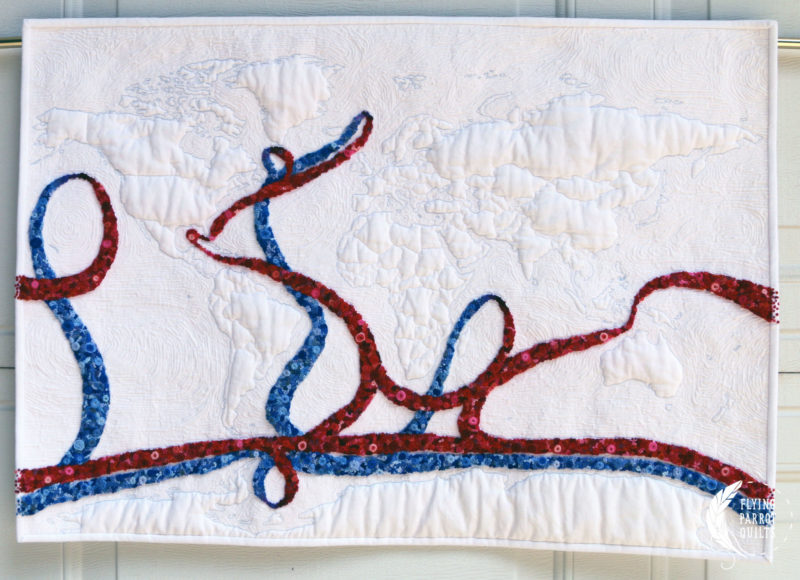
The indirect way in which science influences my quilting is that I think I carry the method of doing science over into my creative life. Science is about experimentation and pushing boundaries. I like to experiment with new techniques and try new things with my quilting as well.

What inspires you? Are there recurring themes in your work? How does that affect your approach?
The science, of course, is a recurring theme, and I’ve been very gratified at how well that has been received. So for my quilt patterns, I’ve definitely been thinking about what other sorts of science motifs I might be able to turn into quilt format. It’s hard striking a balance between things that are not too obscure, and that are also not too complicated to turn into a pattern. So the ones that are one or both of those things end up being my personal projects.

What inspired you to focus on scrap quilting with your new book, Modern Scrap Quilts?
I’d been making a lot of modern quilts using solids, but like many of us I also have quite a collection of prints—often just from being unable to resist picking up a fat quarter of a particularly cute print.
So between having amassed quite a collection of scraps and small cuts of fabrics, and prices of fabric continuing to rise, I wanted to start using more of what I already have. I looked around a bit for ideas for scrap quilts, but I was having a hard time finding many that spoke to me.
I really do love the modern aesthetic with lots of negative space, but a lot of “modern” scrappy quilts don’t use much negative space, and opt to use a solid background with a scrappy foreground.
So, I decided to come up with a bunch of quilts that use scraps in the negative space, and where that negative space is more extensive! In the process, I realized that there are a bunch of concrete methods for incorporating scraps into negative space, so much like my first book, this is also a design guide!
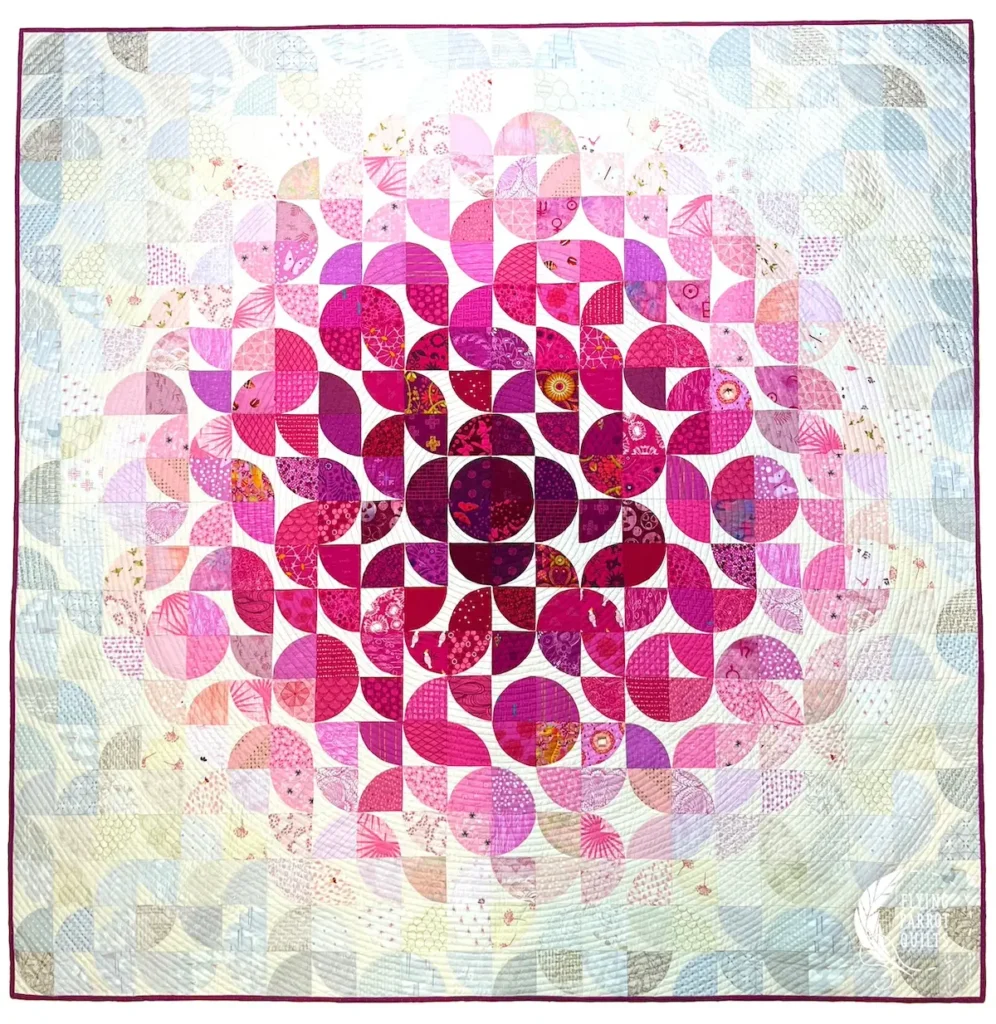
Is there a particular quilt in the book that challenged you creatively or technically?
“Peel and Patch” was probably the most technically difficult quilt, because it is large and involves a bunch of points coming together at block intersections. (The actual curved piecing is easy!) I had to spend some time figuring out how to reduce bulk in seams and seam intersections.
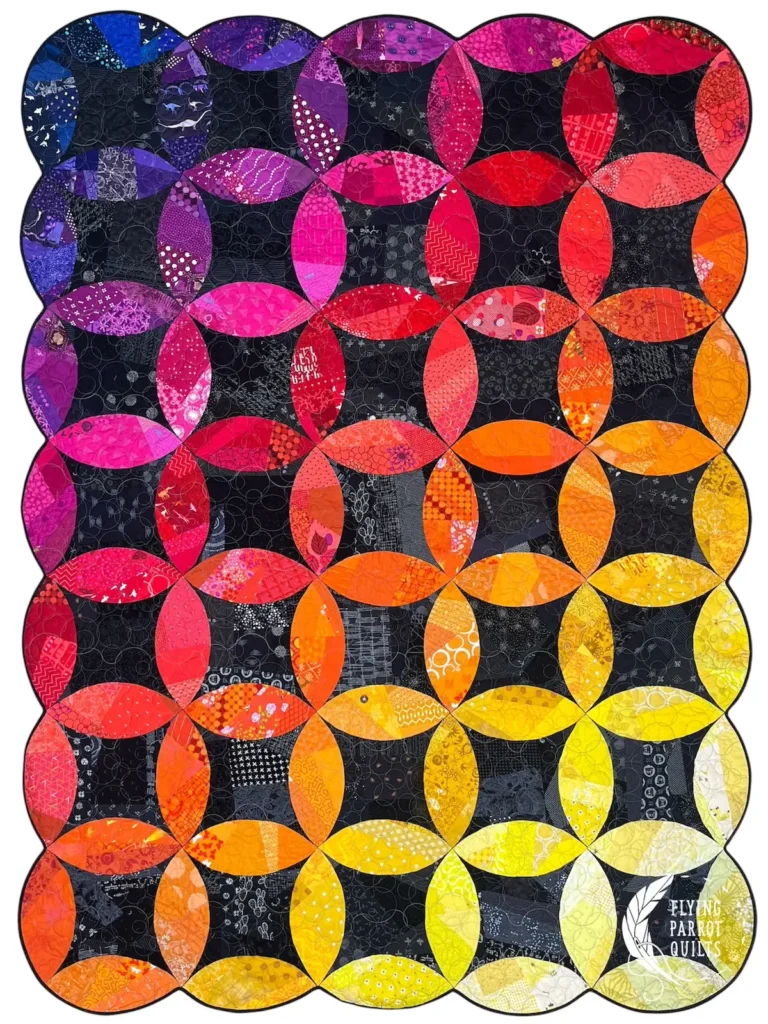
How has writing Modern Scrap Quilts influenced what you’re making in your studio now?
I am definitely considering my scraps and small fabric cuts more than I used to. My default has been solids for a long time, and this is helping me incorporate more prints into my makes. Although I made 10 quilts for the book, I’m unsure whether I made a meaningful dent into my scraps, so I’m hoping to keep going with working on them!
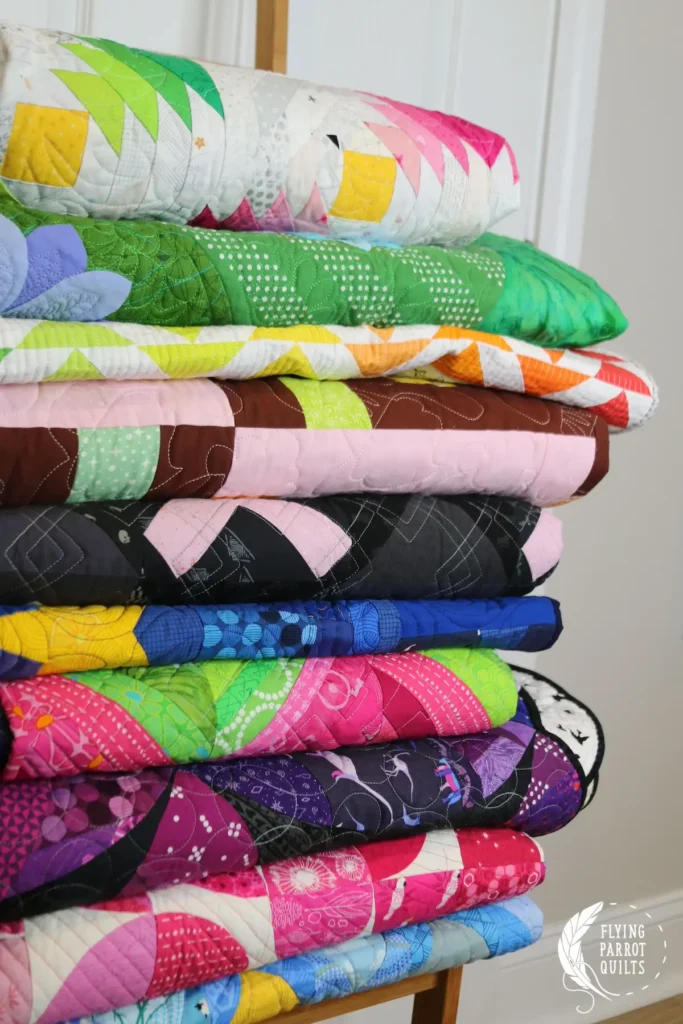
Many quilters have overflowing scrap bins! How do you decide which scraps to use? Do you plan a color palette first? Or let the fabrics lead the way?
I’m definitely a “plan first” kind of quilter.
My approach to scrap quilting uses the scraps as a way to add texture and interest to areas of color, so I sort my scraps by color and value to make sure that they will blend well. I also tend to eliminate scraps that have too many different colors or where the print is really bold, as I find that these can draw too much attention.
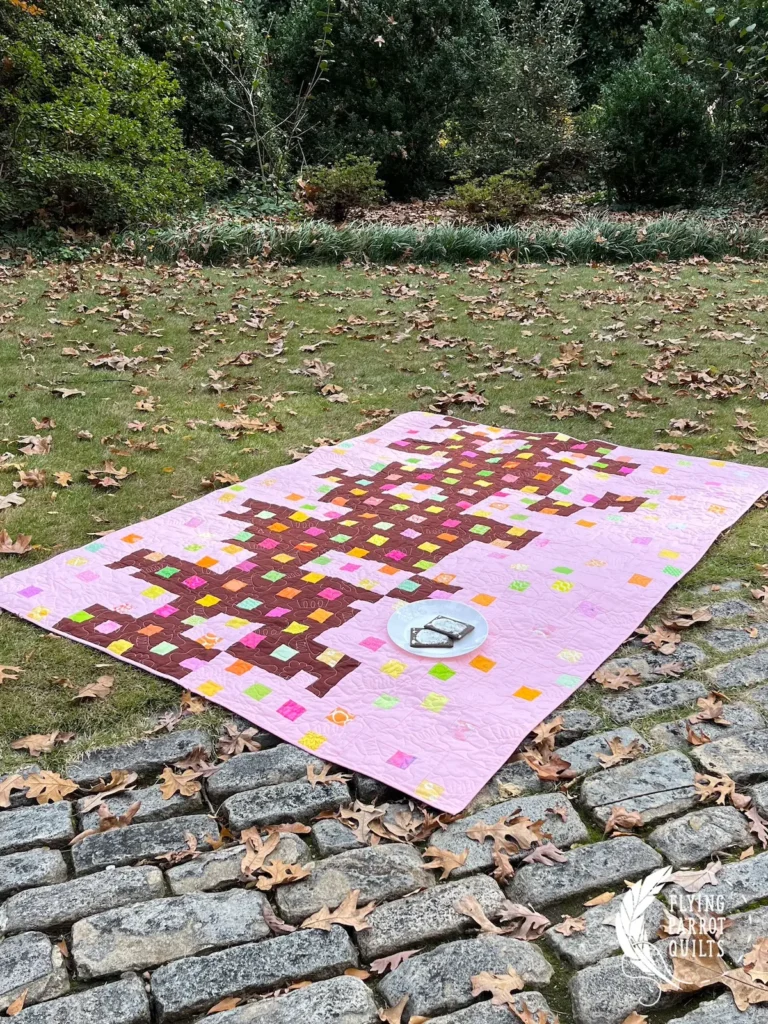
For quilters who might be intimidated by scrap quilting, what advice would you give them to help them embrace the freedom and fun of it?
It really helps to get your scraps organized at least a little. If you’ve been tossing everything into one big bin, spend some time sorting your scraps by color. (You could also sort by value, if that’s more your jam, but color works better for me.) If nothing else, this will tell you what you have the most of, which you may want to use to make choices about your color palette.

What is the most important takeaway you want readers to gain from your book, The Quilter’s Negative Space Handbook?
The book is all about design techniques to help quilters incorporate negative space into their quilt designs. I think that there are many quilters out there who enjoy the look of modern quilts, but aren’t sure how to incorporate a lot of negative space or background fabric into their designs. My hope is that this book will give them the confidence to start designing!
Define Modern Quilting for us. How does negative space play a role?
The quilts that I’ve made that don’t include much or any negative space tend not to feel like my modern quilts. That’s not to say that a quilt that doesn’t include negative space can’t be modern. But at least for my personal quilts, negative space feels like a must. It’s really hard to define modern quilting overall. But I find that quilts with lots of negative space, particularly asymmetrically arranged negative space, tend to jump out as unambiguously modern to me.

Your quilt designs appear to be very precise with pieces that have to fit. Is there any room for improv in your style of quiltmaking, or do you plan everything before you begin?
I plan most everything before I start. That said, I really admire many of the modern improv quilts I see. Incorporating more of it into my work is a goal. I’ve actually made a couple quilts recently, including one for the book, that use improv piecing in a controlled way. I really like the way they’ve turned out. I don’t know that I could ever just start sewing fabric together without any sort of plan for what will come out at the end. But using improv piecing is perhaps a baby step in that direction!

Your quilts use a variety of techniques. How do you stay organized when working with multiple design ideas and processes?
I try to keep my works in progress in boxes. That way, the fabrics, templates or special tools I need for a project are handy. Then I can easily just grab them and take them with me when I have a sew day with friends.

What is your favorite storage tip for your fabric and creative supplies?
If I can find homes for items that are within easy reach of where I use the items, I’ll actually put them back. I’m also a sucker for pretty labels. I seem to be more likely to put things away in pretty boxes or containers. So I guess my tip is to find storage solutions that you think are pretty!

Are there indispensable tools and materials in your studio? How do they improve your work?
My favorite tools and materials are the ones that are versatile. I like tools I can use for a variety of projects. Or that make being creative or accurate easier (since accuracy matters to me). Right now, I’m loving my BlocLoc rulers for trimming half square triangles, my new Garden Lines longarm rulers, and of course my Wonder Clips.

Do you enter juried shows? Do you approach your work differently for these venues?
Yes, I do enter juried shows. As for approaching my work differently—both yes and no! Aside from my “pattern” quilts, I do make a smaller number of “show” quilts. All of them are quilts I really want to make for one reason or another. But the quilts I consider show quilts tend to be those that aren’t suited to writing a pattern for because they are just too complex. That said, I also will enter quilts I have made as pattern quilts into shows, and some of them have surprised me by doing well. I try to do my best work on every quilt.

What is on your design wall right now/what’s next for you?
I’ve been working a lot on patterns for quilting magazines lately. I’m eager to get back to a couple of patterns for my own line that I’ve been working on. In particular, I’ve got another science quilt design that I’m really excited about. I need to finish the quilt so that I can release it into the wild!
Learn more about Sylvia and her work on her website.
Interview of Sylvia Schaefer posted February, 2019.
Browse through all of our Spotlight interviews on Create Whimsy.

